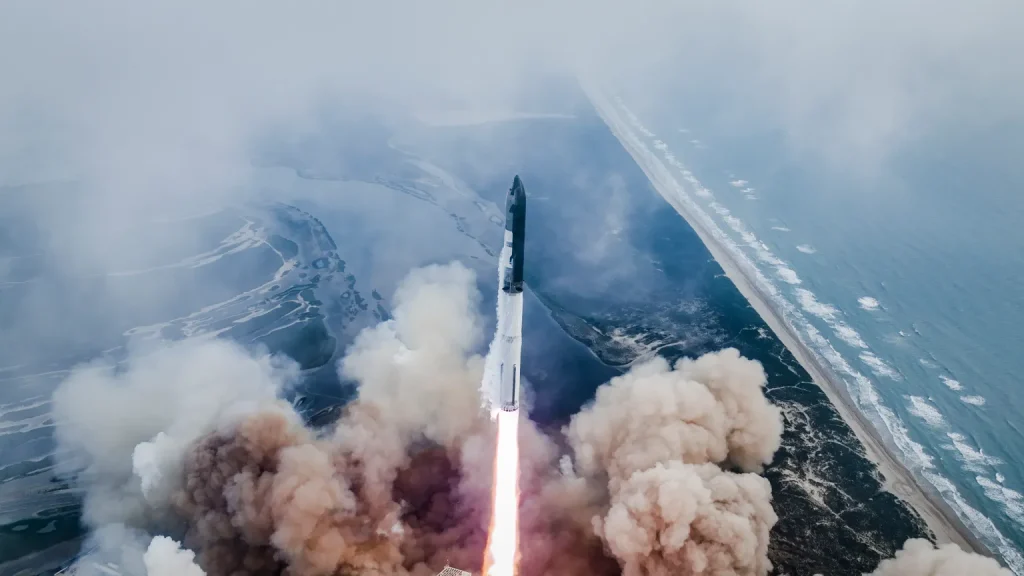
As part of NASA’s Artemis campaign to return humans to the moon for the benefit of all, NASA is working with SpaceX to develop the company’s Starship human landing system, HLS. This system will carry astronauts during Artemis III and Artemis periods. The IV mission will land near the moon’s south pole. On March 14, SpaceX began its third integrated flight test of the superheavy booster and Starship upper stage, a key milestone in delivering Starship HLS to NASA’s Artemis mission.
A group of 33 Raptor engines, fueled by supercooled liquid methane and liquid oxygen, powered the super heavy booster with the spacecraft stacked on top of it at 8:25 a.m. CDT from the company’s Starbase orbital launch pad. was supplied. According to the flight plan, the spacecraft, equipped with six Raptor engines, used hot staging technology to ignite the engines and separate from the Super Heavy booster about three minutes into the flight. This was his third flight test of the integrated superheavy Starship system.
“SpaceX seeks to pursue increasingly ambitious goals for Starship with each flight test to learn as much as possible for future mission system development. Like these integration tests, “The ability to test key systems and processes in flight scenarios will allow both NASA and SpaceX to collect critical data needed for further development of the HLS spacecraft,” said HLS Program Manager, NASA Marshall Space Flight. says Lisa Watson Morgan. Center in Huntsville, Alabama.
This test achieved several important innovations that will contribute to the development of the spacecraft for the Artemis lunar landing mission. The spacecraft has reached its planned orbit and the starship has completed its complete ascent process.
Also Read: Paul Alexander: ‘The Man with the Iron Lung’ dies at 78: Click here
A goal germane to future Artemis operations is to transfer thousands of pounds of cryogenic propellant between internal tanks during the spacecraft’s landing phase as part of NASA’s Space Technology Mission Directorate’s 2020 Tipping Point Award. It is to transport. Fuel delivery demonstration efforts have been completed, and the NASA-SpaceX team is currently reviewing the flight data received. This demonstration of Tipping Point technology is one of his more than 20 development activities being conducted by NASA to address the challenges of using cryogenic fluids in future missions.
To understand how super cooled fuel splatters in the tank when the engine shuts down and how this movement affects Starship’s stability in orbit, engineers Flight test data will be studied to evaluate the performance of the engines that control the spacecraft’s orientation in space.
They will also learn more about how to control fluid movement within the tank to maximize fuel transfer efficiency and ensure the Raptor engine has the necessary fuel conditions to support an on-orbit restart. I’m interested in Cryogenic fuel storage and transfer in orbit has never been attempted at this scale,” said Jeremy Kenney, NASA Cryogenic Fluid Management Portfolio Project Manager at Marshall. “But this is a breakthrough technology that must be developed and matured for scientific exploration missions on the Moon, Mars, and deep within the solar system.”
NASA’s Artemis As part of his campaign, NASA is set to land its first woman. The first people of color and the first international partner astronauts set foot on the moon and prepare for a manned expedition to Mars. Commercial human landing systems are critical to space exploration, as are the Space Launch System rocket, the Orion spacecraft, advanced spacesuits and probes, the Exploration Ground System, and the Gateway Space Station.